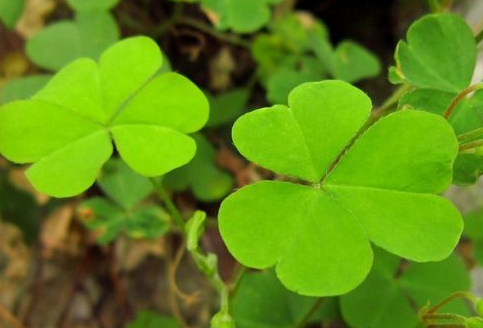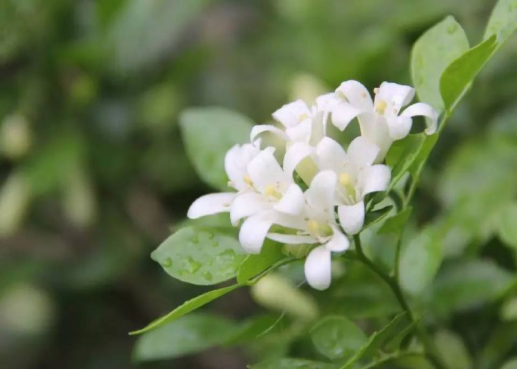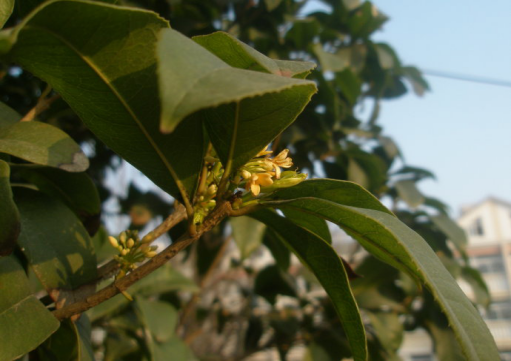Matters needing attention in the culture of sorrel
1. Soil
Oxalis likes rich and moist soil, but Oxalis is also afraid of waterlogging, so the drainage of the soil must be good.

two。 Temperature
The growth of sorrel is suitable for warm at 16-22 ℃, more hardy, and can remain green in winter at minus five degrees, but the leaves will wither if it is below minus five degrees, and when it is higher than 35 ℃ in summer, it will make the leaves curl and go into dormancy.
3. Sunshine
The growth of sorrel needs a lot of light, especially in the peak period of spring and autumn, it is necessary to receive light all day, otherwise the lack of light will make the leaves lose their luster and the plants will be weak, but they should also pay attention to shade in summer to avoid sunburn.
4. Moisture content
Sorrel likes the moist environment, needs to keep the soil moist, the soil dries to the water, the summer dormancy period also wants to keep moist, the winter can keep the soil to be too dry.
The efficacy and function of sorrel will tell you this. Friends who like sorrel can try to raise a pot. Sorrel grass will certainly bring you a lot of fun.
Matters needing attention in the culture of Eleurotus angustifolia 1. Pruning
When the plant growth is too prosperous, the dense leaves need to be removed to improve the ventilation and light transmission conditions, and the dead leaves should be removed in time to keep the plant shape beautiful.
two。 Turn the basin
The purple leaf grass grows rapidly, so it should be turned over once a year in spring to replace the new fertile and suitable soil in time.
3. Fertilizer application
The bottom fertilizer should be applied when the purple leaf grass is cultured in the basin, and the nitrogen, phosphorus and potassium compound fertilizer can be applied once a month during the growing period. the fertilizer concentration should not be too high, and do not apply a single fertilizer, otherwise it will affect the plant growth.
The above is the cultivation method of purple leaf sorrel brought to you by the editor, hoping to help you raise a beautiful purple leaf sorrel.
Culture method of Oxalis safflower the difference between Oxalis and Oxalis
Under the safflower sorrel grass, there are globular rhizomes, white and transparent, and its flowers and leaves are sensitive to sunlight. Then how to cultivate safflower sorrel? What's the difference between safflower sorrel and sorrel? Next, let's look at the culture method of safflower sorrel and the difference between safflower sorrel and sorrel.
I. Culture methods of Carthamus tinctorius
1. Sowing: safflower sorrel can also grow in general soil, but it grows fastest in fertile, loose and well-drained sandy soil. Planting should not be too deep. Apply organic fertilizer once a month during the growing period and water it in time. During the growing period, you should pay attention to watering, keep it moist, and apply fertilizer 2-3 times to keep the flowers blooming and leaves luxuriant. The growth is slow in the hot season, basically in the dormant state, should pay attention to stop fertilizing water, put in the shade, protect the summer. Fertilizer and water management should be strengthened during the peak growth period in winter and spring.
2. Seedling emergence: dig up the whole aging seedling with a shovel, gently pat off the persistent soil around the root system, and store it centrally. Dig seedlings a little further away from the plant, so as to avoid accidental injury to the bulb, and pay attention to the spade to dig straight down, not obliquely dig down, hurt the bulb.
3. Ramet: the withered and residual leaves were removed and the old leaves were removed to reduce transpiration and water loss after planting. The lower old bulb should be cut off with a sharp knife, and the incision should be under the first or second new bulb, so that the seedlings with one or two new bulbs can not only remove the lower old bulb, renew and rejuvenate, but also ensure that the new plant has enough nutrients to sprout and blossom quickly. Finally, in the cut new bulb wound, dip it with fresh plant ash to prevent the wound from rotting.
4. Fertilization: add organic fertilizer to the flower bed where the aged seedlings are dug up, turn it over again and rake away the withered leaves and weeds. Generally, 0.5 to 0.8 kg / m2 of cooked cake fertilizer is applied, and appropriate phosphorus and potassium fertilizer is applied to ensure the flowering needs of safflower sorrel.
5. Planting: Elaeagnus angustifolia grows rapidly, and each plant can reproduce 3 to 9 seedlings in the same year. When planting, we generally use character-shaped hole planting, plant row spacing 25x35 cm. Dig holes 8 to 10 centimeters deep with a small shovel, put 4 to 6 plants in each hole according to the size of the bulb, and cover 3 to 4 centimeters of soil, pay attention to exposing the leaves to the surface of the soil. Of course, you can also use the method of trench planting, the row spacing is generally 15 to 30 cm, and water it after 2 to 3 days of planting to prevent the bulb from rotting.
6. pest control: Carthamus tinctorius is easy to be damaged by red spiders. if it is not controlled in time, it can cause yellow leaves, dry up, few flowers and affect the ornamental value. Therefore, the grass can be sprayed with 1000 to 1500 times of omethoate, 0.2 to 0.3 degrees of stone sulfur mixture, and acaricides.
2. The difference between safflower sorrel and sorrel
Oxalis is a general name of the family Oxalis. But now we generally use it to refer to sorrel. In addition to the difference in flowering color between yellow sorrel and safflower sorrel, the most obvious difference is that
1. The former can form seeds, while the latter can not form seeds by tuber propagation.
2. The stem of the former is multi-stage bifurcated and can grow creeping, while the latter is unbifurcated. Several petioles are separated from a tuber, and a leaf grows above each petiole. In addition, there are some differences in the color, shape and texture of the leaves. But these are not as obvious as the two points mentioned above.
The above is the introduction of the culture method of safflower sorrel and the difference between safflower sorrel and sorrel. I hope it will be helpful to everyone.
- Prev

The culture of evening primrose
The temperature of the greenhouse in which the temperature is raised should be kept at 8-12 ℃ all the time. If the greenhouse is below 5 ℃, the leaves will wither and fall off, which may even threaten the survival. The best time to move into the shed is in mid-late October. Light night fragrance like light, need good ventilation
- Next

Maintenance of four seasons cinnamon
Give it fertile, drained slightly sour soil; give it plenty of sunshine and clean moist air; give it a temperature of 18 ℃-25 ℃; water it appropriately. If you do a good job in these points, the four Seasons Cinnamon will bloom as promised in January, April, August and National Day every year. Careful care can be exchanged for the company of the four seasons
Related
- Fuxing push coffee new agricultural production and marketing class: lack of small-scale processing plants
- Jujube rice field leisure farm deep ploughing Yilan for five years to create a space for organic food and play
- Nongyu Farm-A trial of organic papaya for brave women with advanced technology
- Four points for attention in the prevention and control of diseases and insect pests of edible fungi
- How to add nutrient solution to Edible Fungi
- Is there any good way to control edible fungus mites?
- Open Inoculation Technology of Edible Fungi
- Is there any clever way to use fertilizer for edible fungus in winter?
- What agents are used to kill the pathogens of edible fungi in the mushroom shed?
- Rapid drying of Edible Fungi

